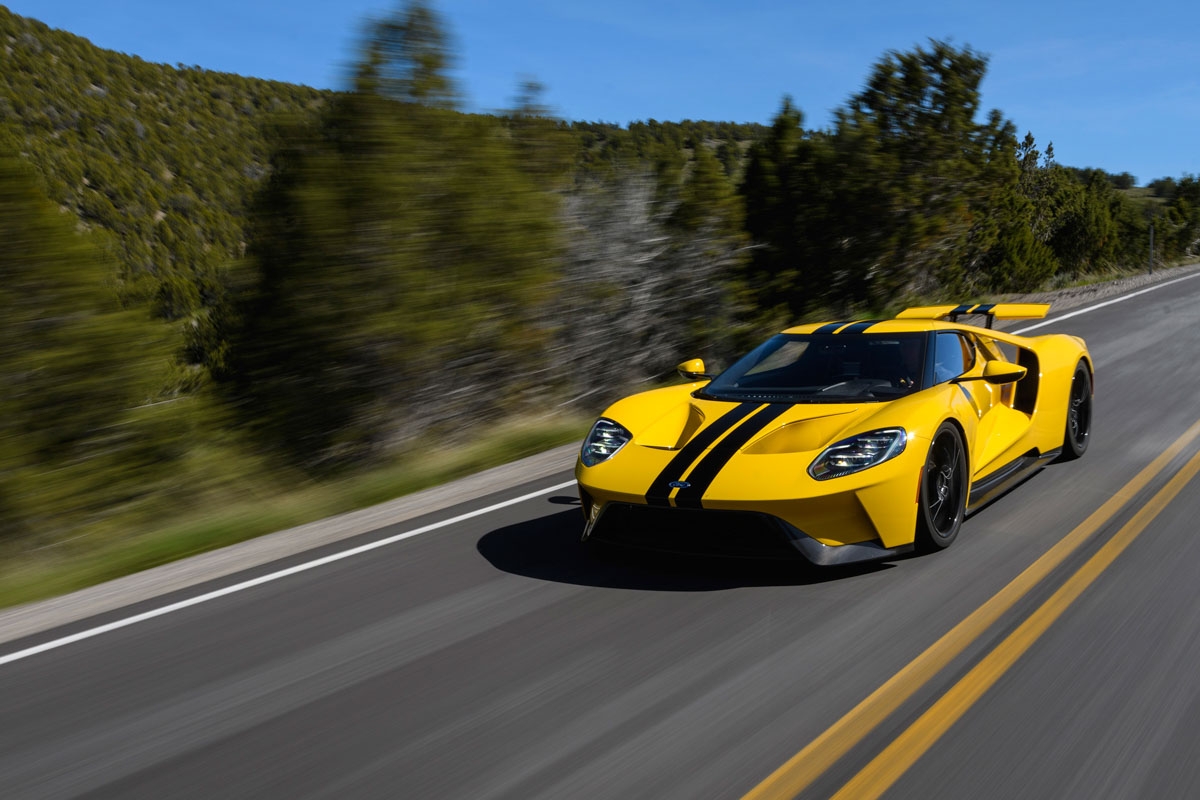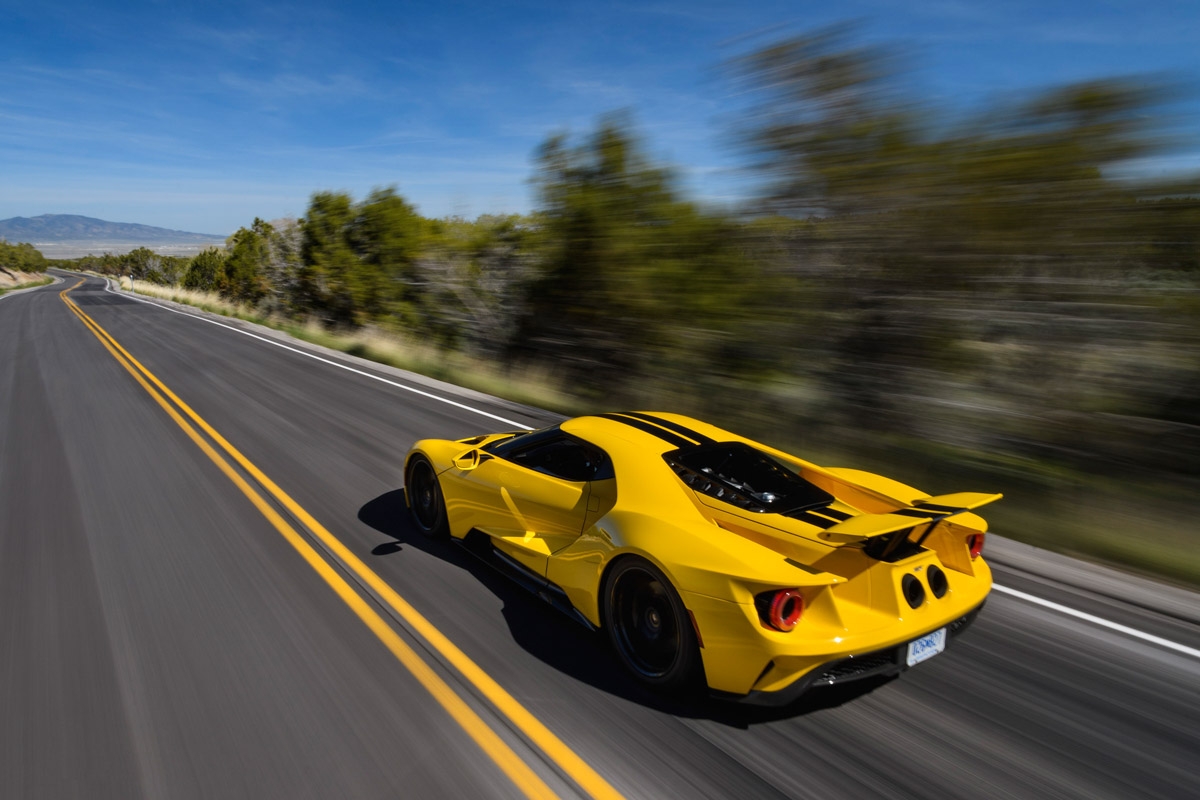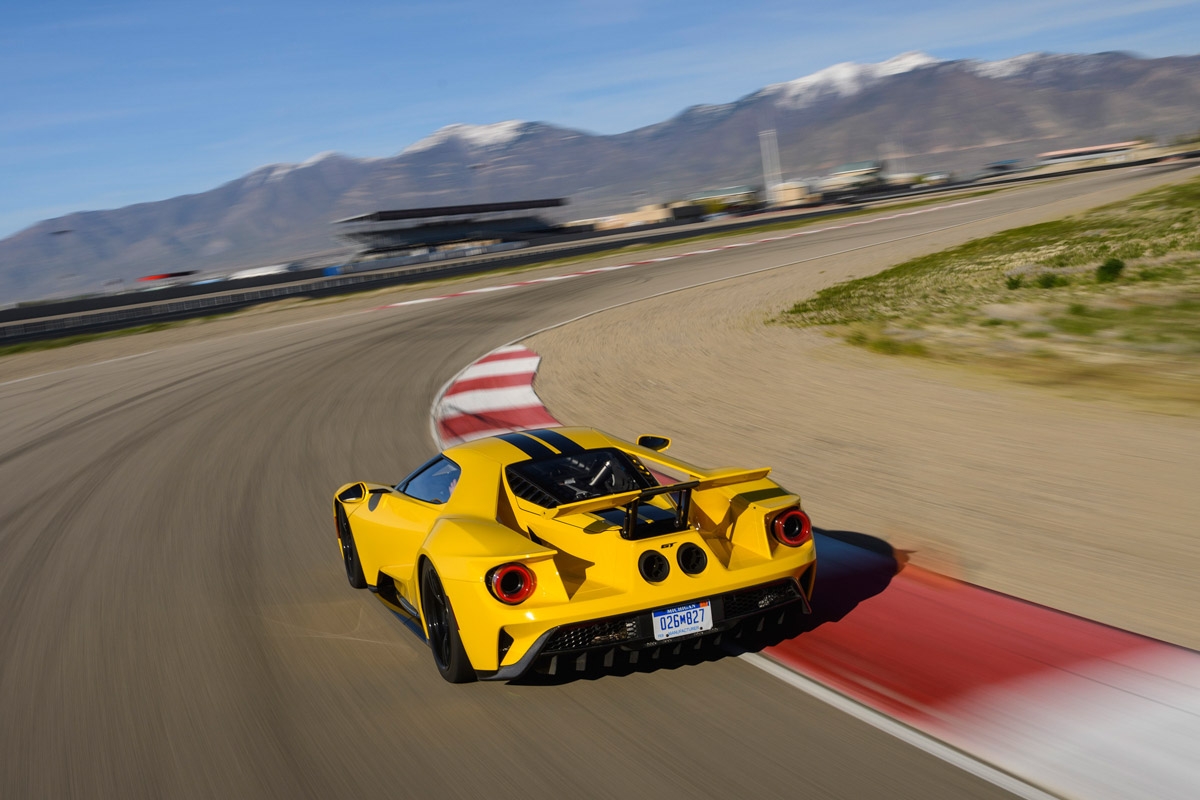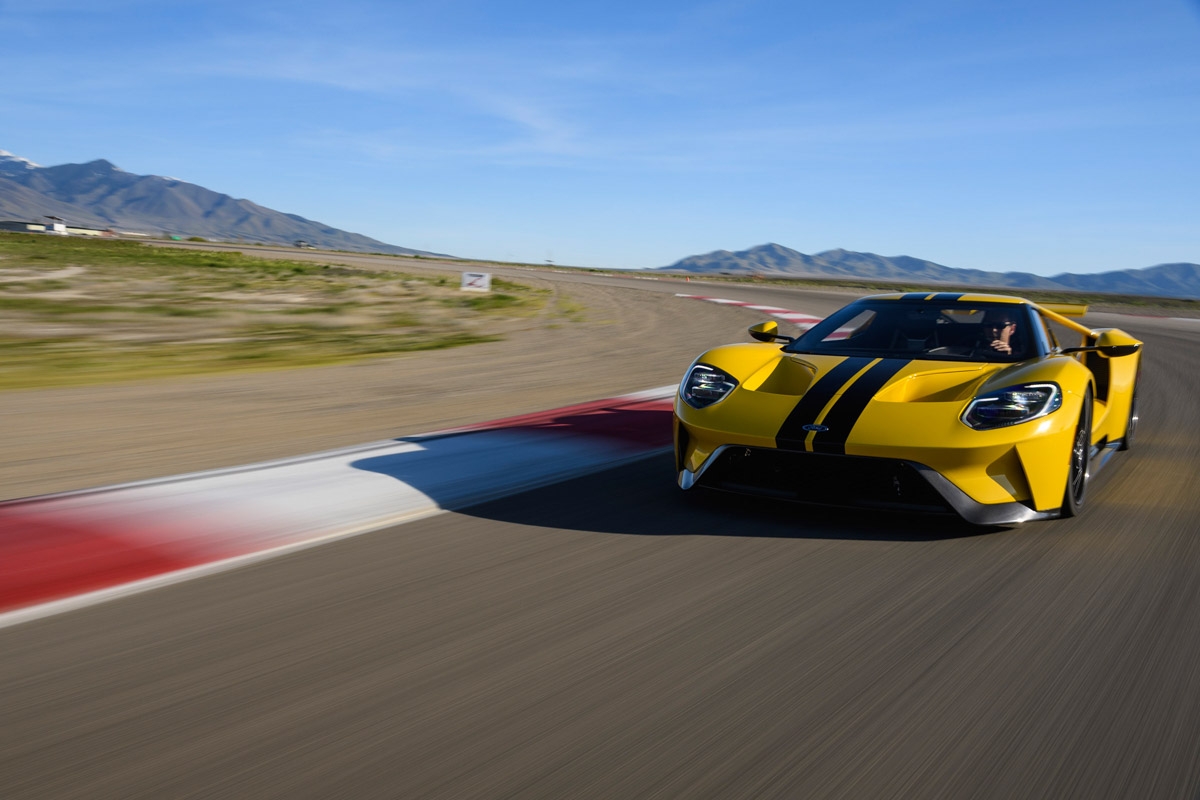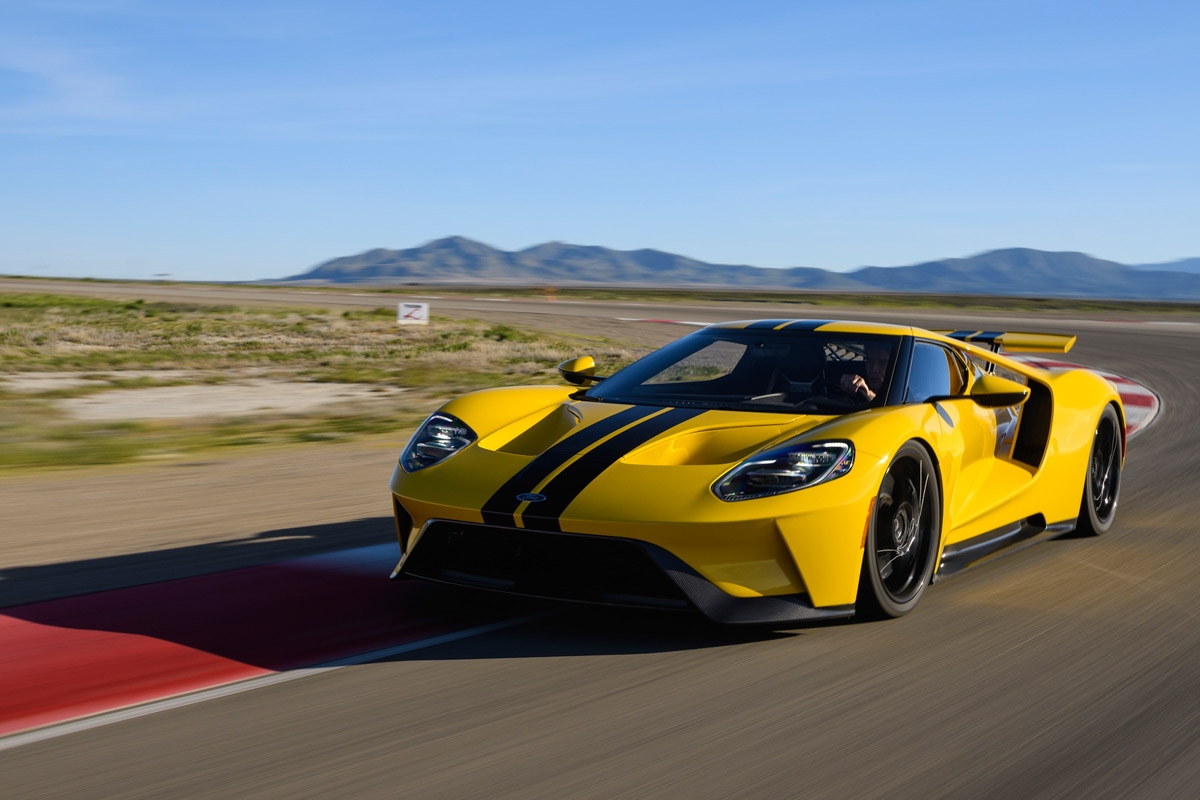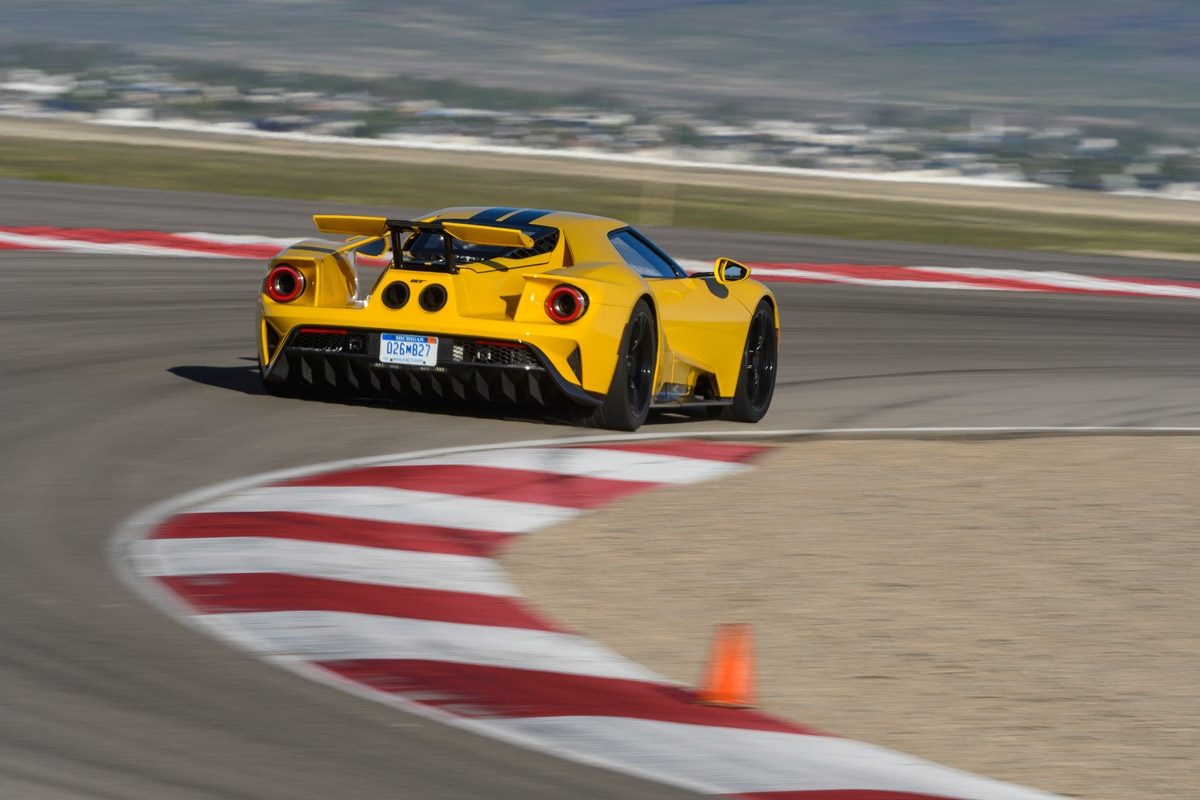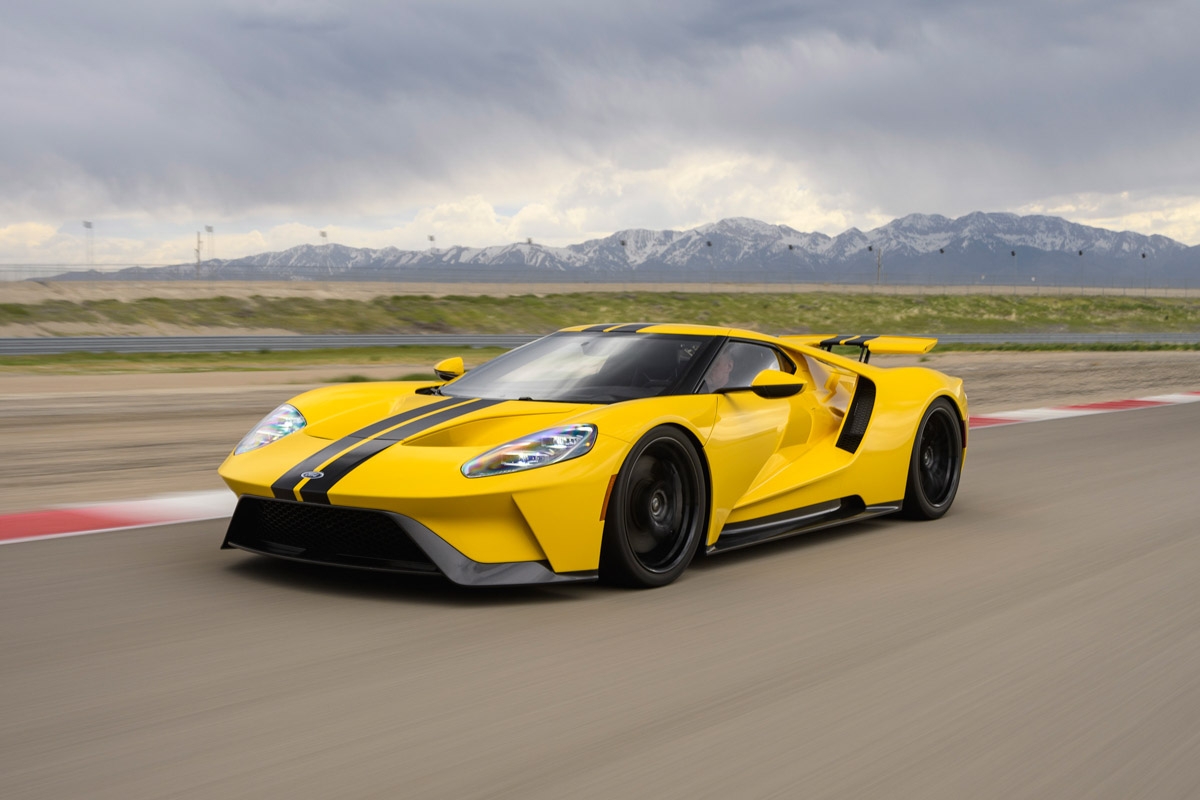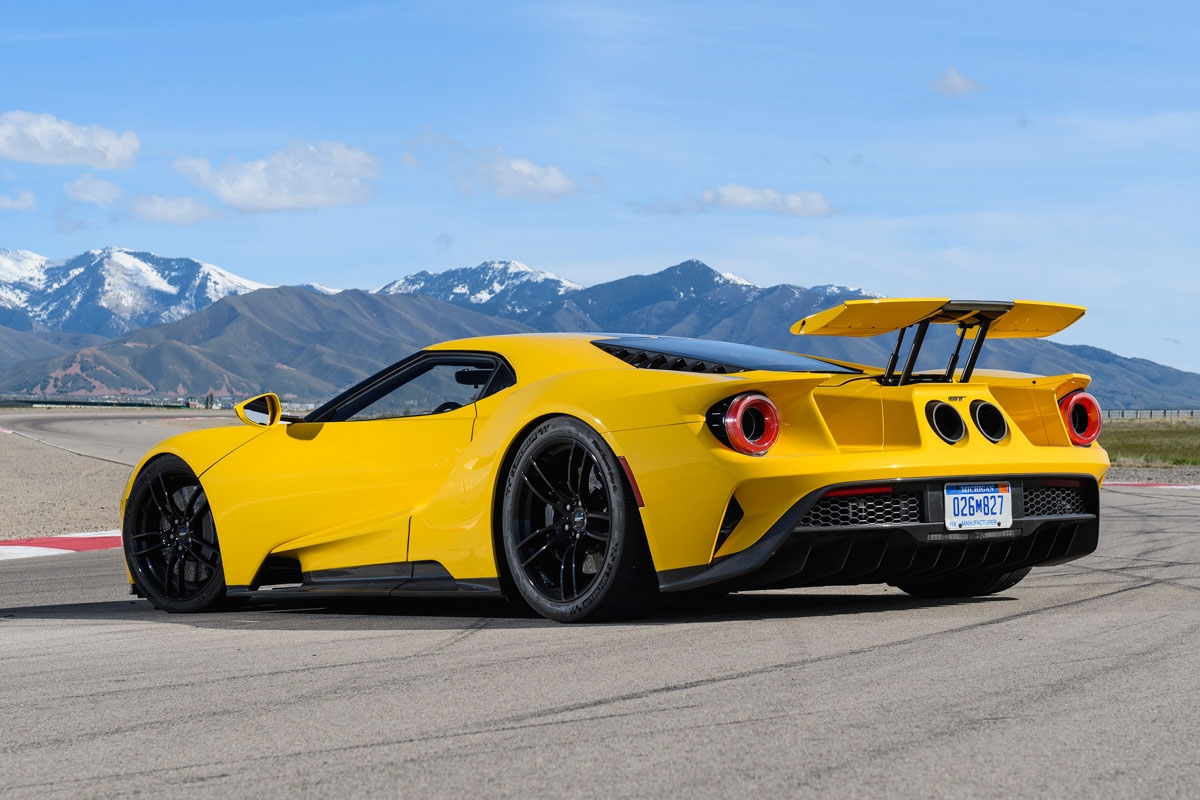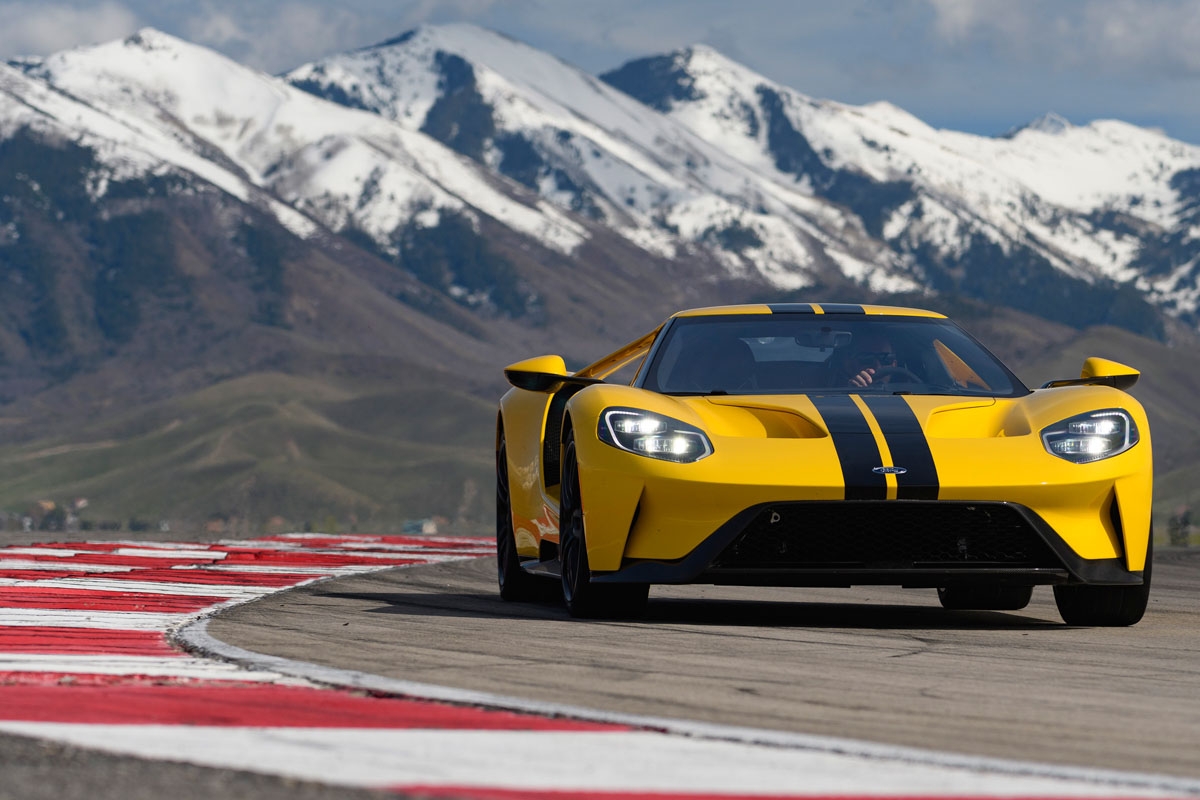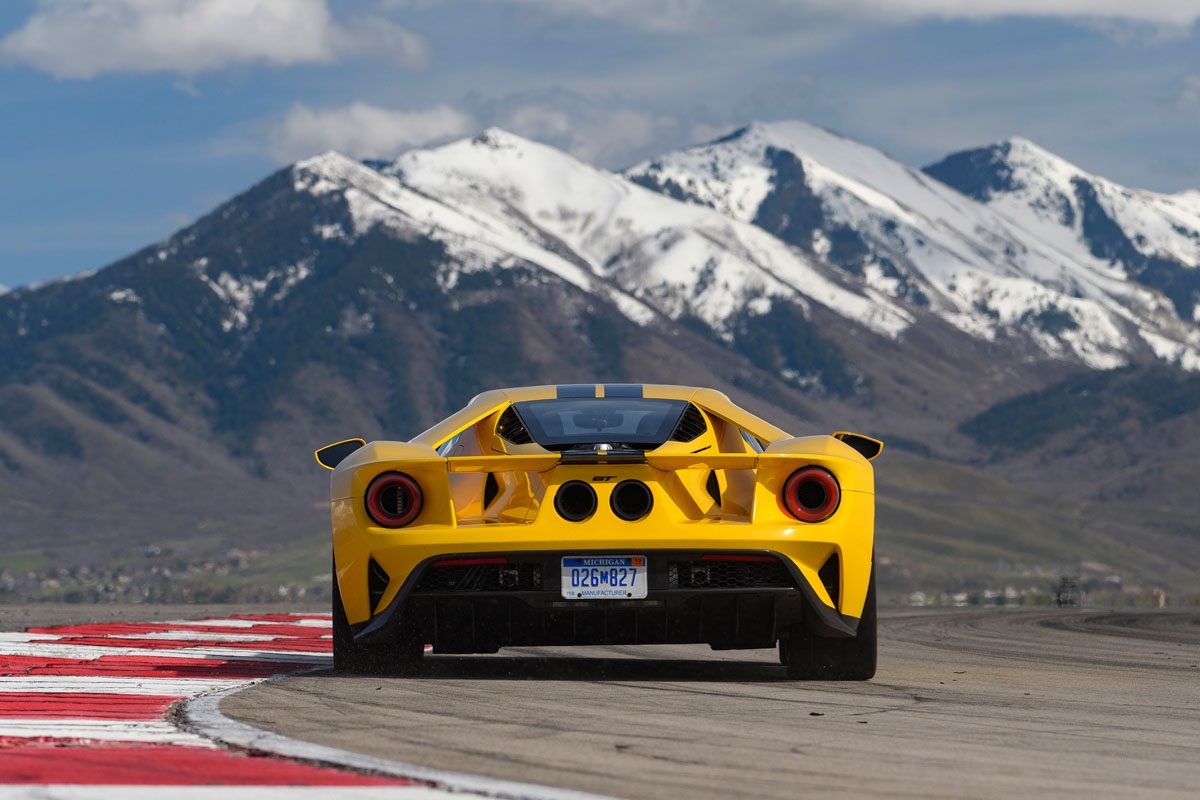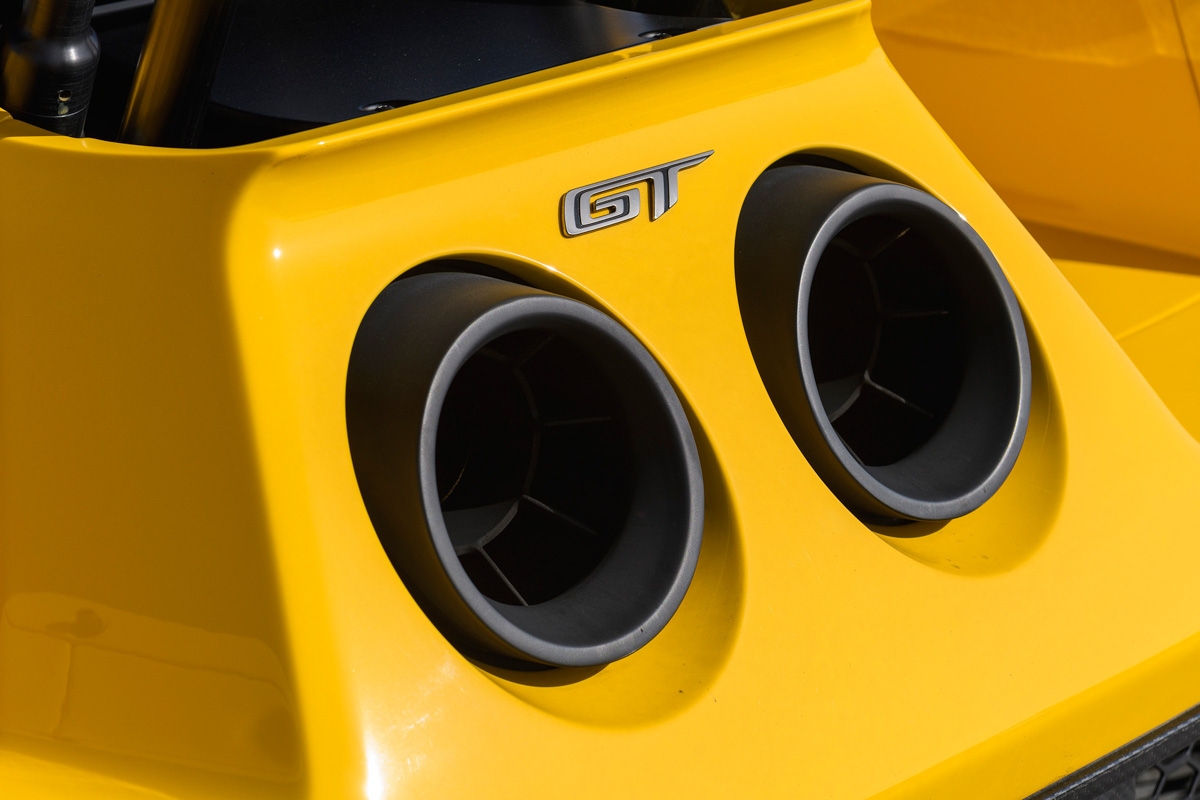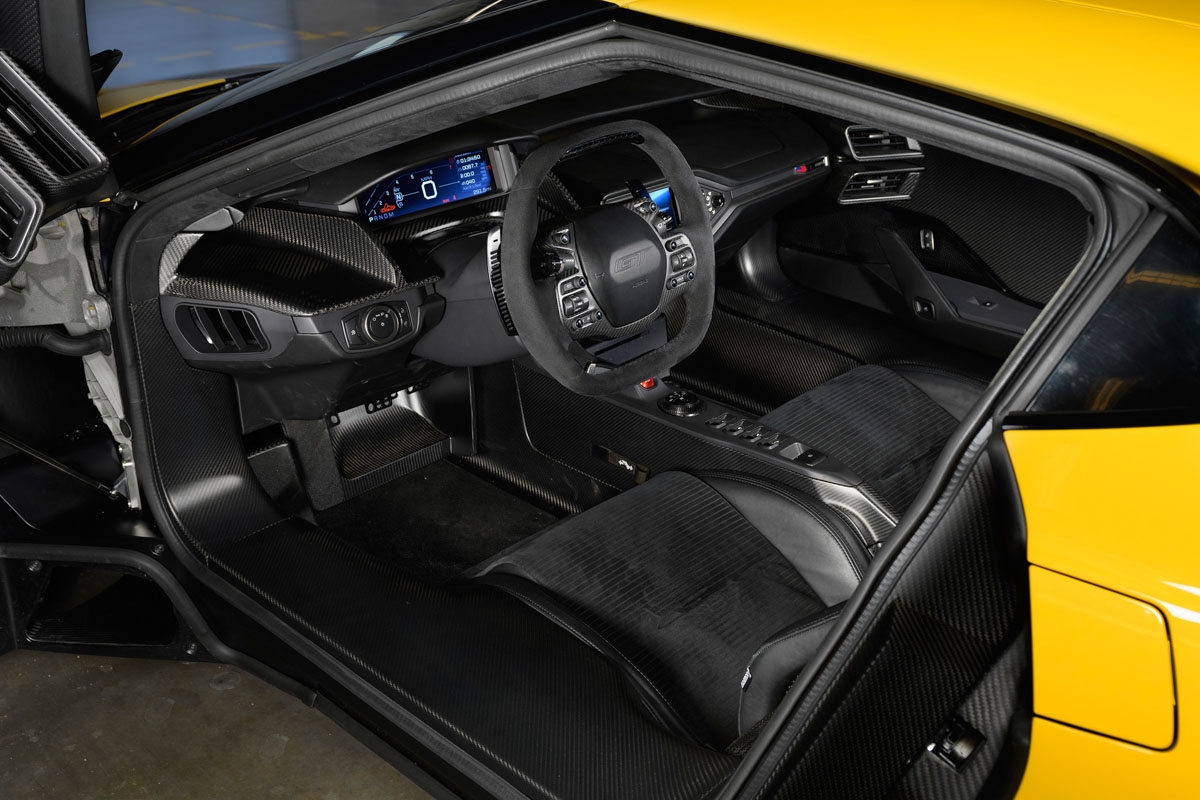New GT is epic to drive on a track, but less so on the road
It would be all-too easy to introduce Ford’s new $598,635 supercar with endless references to yesteryear – because we all know where the story for the Ford GT began. Henry Ford tries to buy Ferrari to win at Le Mans in the 1960s, Enzo says get stuffed, Henry builds his own version of a Ferrari to do the job instead – called the GT40 – and puts one right up Enzo, the end.
Or, in fact, just the very beginning for the Ford GT as things would turn out.
Except there’s an intriguing new story doing the rounds about the birth of the latest Ford GT, and it only came to light at the car’s launch recently in the US. Because initially Ford wasn’t going to build a new GT at all, it seems. Instead it wanted to return to Le Mans with a Mustang, and to then create a road car on the back of the racing project to market the Mustang globally. For one whole year, in fact, Ford tried and failed to come up with an uber racing Mustang to take on the 911s, Corvettes, Ferraris and Astons that compete at Le Mans each year. At the same time they tried to craft a road-going version to co-incide with the Le Mans project to celebrate the company’s 50th anniversary of its victory at the famous 24 hour race.
And then something called Project Silver happened. After a year Ford reached the painful realisation that the car they’d been attempting to engineer for the last year had begun to bear no resemblance whatsoever to a road going Mustang. Which meant the marketing would never work. And at that point the idea to go back to Le Mans with a Mustang was canned, and replaced with a top secret skunkworks – Project Silver – to build an all-new GT to take to Le Mans, plus a corresponding road car to go with it. And thus, at the end of 2013, the idea for an all new Ford GT was born.
The road car we drive here has been a while coming since then, true, to a point where some cynics have already accused it of being mildly off the pace beside cars like the McLaren 720S, especially with a price tag over two times that of the McLaren. So perhaps the best way to tee-up the all new left hand-drive only GT is to remind you of some key facts about it, just in case you think it’s already old news.
Tech highlights
At the centre of the new GT lies a carbon fibre tub with pushrod suspension front and rear, plus a seven speed dual clutch gearbox that’s integrated within the rear suspension. All the body panels are made from carbon fibre, the vast majority of its metal components are made from aluminium. All up it weighs just 1385kg dry, so call it around 1450kg with fluids. This makes the GT lighter than any of its more obvious rivals from Ferrari, McLaren et al, says Ford.
The brakes are by carbon ceramic discs all round, and the wheels are 20x 8.5in forged alloys at the front with 20 x 11.5in forged alloys at the rear (or full carbon fibre wheels of the same size can be specified for quite a few pounds extra, though Ford won’t disclose how many other than to potential customers). Tyres are Michelin Pilot Sport Cup 2s, 325/30s at the rear rear, 245/35s up front.
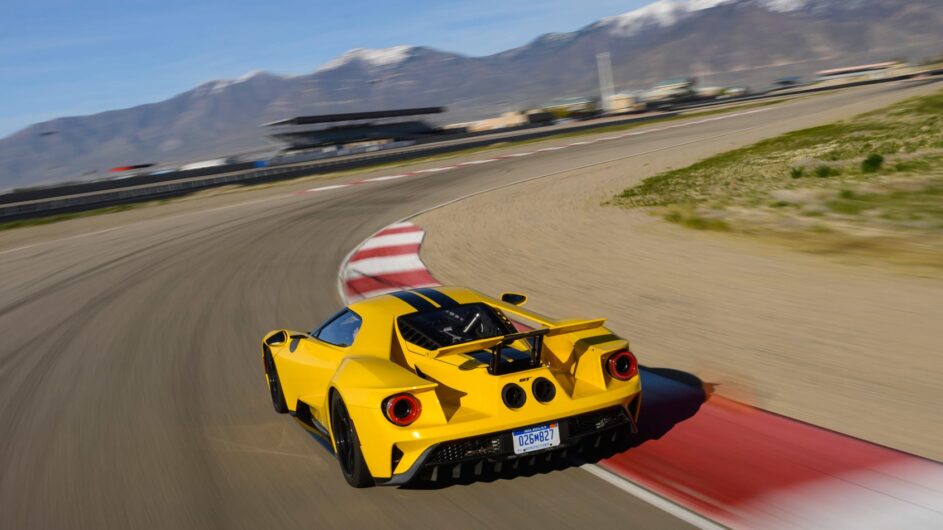
The car has five different drive modes (see more detail below) plus a computer controlled aerodynamic package that helps it develop less drag but more downforce than any rival, says Ford. There’s also an electronic airbrake at the back and winglets at the front that move to alter the centre of pressure as the downforce increases at speed. Without these the GT would develop too much downforce at the front, relative to the rear, says Ford.
In track mode the car lowers by 50mm at the flick of a switch, and the springs effectively become 100 per cent stiffer than in sport mode.
Engine, transmission, 0-100kph time
The GT is powered by a 3.5-litre twin turbo V6 that’s been tried and tested, and which has won several times, in sports car racing. It develops 638bhp at 6250rpm and a peak of 550lb ft at 5900rpm, with the vast majority of that peak figure available flat between just over 3000rpm and just under 6000rpm. It features five different drive modes; wet, comfort, sport, track and v-max. In sport and track there is an anti-lag system that all-but eliminates lag, says Ford.
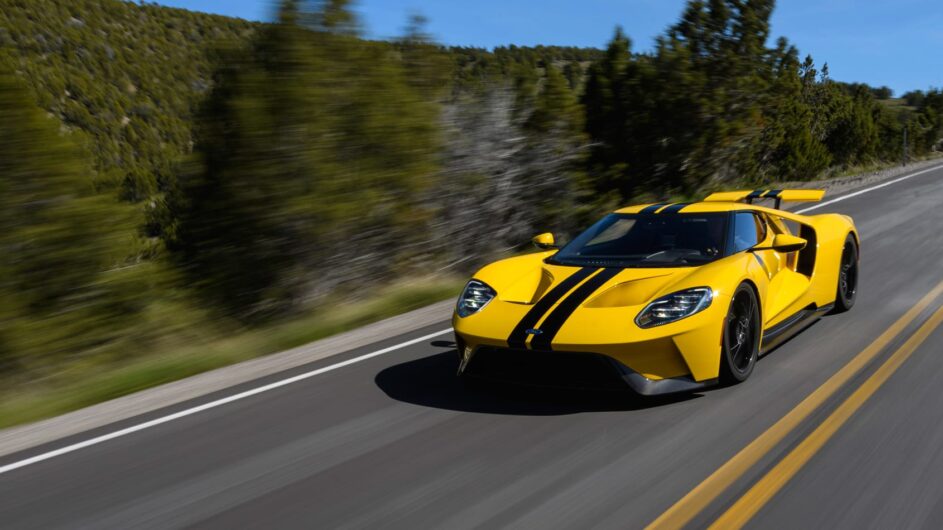
The gearbox is a seven-speed dual clutch that’s integrated into the rear suspension, and which is ultra lightweight in design.
Zero to 100kph takes 2.8sec, the top speed is 348kph and, just guessing, we’d say 0-161kph in somewhere between five and six seconds.
What’s it like to drive?
Even in the first few feet of travel the GT feels incredibly alive beneath your backside, in a way that only proper racing cars do. The seat base is fixed so you move the pedals and wheel towards you, a la LaFerrari. And to begin with the suspension is compliant but very stiff in its feel, and supremely controlled in its response; the braking power also immense.
The noise from the twin-turbo V6 engine and the acceleration it can so readily generate is also deeply racing car in its feel and delivery. At low revs it sounds grainy, angry, industrial, and not especially pleasant to be honest. But as the revs rise past 2500rpm the sound changes, the acceleration gets much stronger as the V6 homes in on its torque peak – which is basically flat between 3200-5800rpm – and the cumulative effect is utterly dramatic, no mistake whatsoever about that.
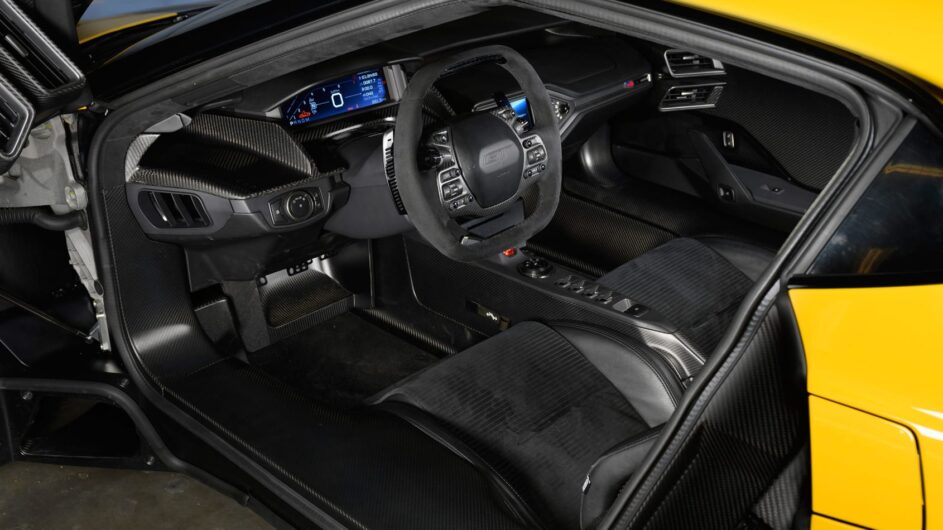
And then there’s the way the gearbox operates, slicing up or down through the ratios with a speed and precision that you couldn’t hope to replicate with a third pedal and conventional gear-lever. After five laps in it driven at a reasonable lick, all but the most skilful drivers would probably want to calm down a bit and have a rest, so much grip does it generate through the corners, down the straights, in the traction zones, everywhere. And after another five laps you would definitely need a lie down to have a good think about what this car is doing, how it is doing it, and how you can get even more out of it. Which is where the Track mode setting comes in.
To engage this you need to come to a complete stop, flick a switch on the steering wheel and then, thump, the thing drops instantly by 50mm, reducing the overall ride height above the ground to just 70mm. So you go out in it again and that’s when the real monster that lies at the heart of the Ford GT reveals its true being. It doesn’t feel any faster in a straight line in Track mode (because it isn’t) nor do the gear changes feel any more aggressive than they do in Sport – which gets an anti-lag system. But the turn in response, the body control, the perception of grip and, most of all, the subjective power of the brakes (weirdly) all go to another level again.
In Track mode the way the GT stops for and turns into corners becomes a little bit ridiculous, frankly. You also notice the absence of weight that it carries, and the pure precision this lends it, everywhere. In Track mode it is fair to say that the GT is utterly spectacular to drive. In Track mode, in fact, the GT feels quite a lot like a full blown racing car, a fact that even its creators admit is not at all far from the truth.
So what’s the problem with the Ford GT? And what are the aforementioned not-so-incredible aspects of the way it drives? OK here goes – and sorry about this Ford but I suspect that in your heart of hearts you know what’s coming here anyway – on the road the GT feels and sounds and just is …a little bit rough around the edges, a touch uncouth, and just not as refined mechanically as you might expect.
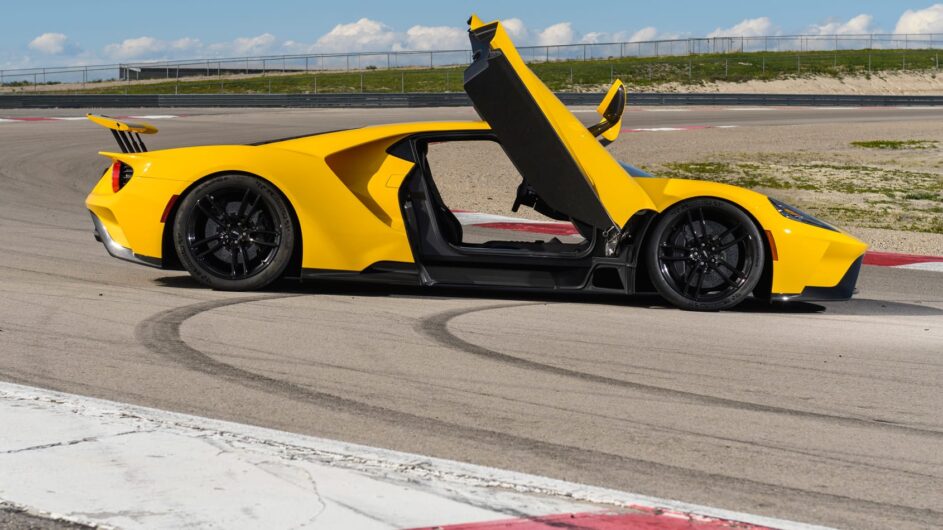
On the track, at maximum attack, all the fizzes and vibrations and noises that accompany your every move, most of which are down to the carbon fibre tub, simply aren’t an issue because everything is focused on going faster. But on the road they start to irritate you after a while. And after a long time behind the wheel I suspect they’d drive you round the twist.
Conversation is only just about possible at 80kph, so much of a din is there on the move, and at 113-129kph it’s so loud inside the cabin you need to shout to be heard by a passenger. It also feels very wide and very big out on the public road, intimidatingly so on occasions. And the fuel range is borderline hopeless with a 6.8kpl/57.5-litre tank combo.
Twenty years ago all of this would have been fine, and the GT’s brawny rawness would have been deemed perfectly acceptable. Appealing, even, in a macho kind of way. But things have come a long way in terms of supercar usability during that time, and in 2017 the GT is nowhere beside its more obvious rivals in this respect. It also has a boot that is smaller than tiny, with no usable luggage space whatsoever inside it.
The ride, on the other hand, is actually not bad on the road so long as you select the comfort setting on the electronic dampers. But then there are other issues surrounding the brakes, which under light loads become difficult to modulate smoothly; the steering, which suffers from kickback on rougher surfaces; and even the engine noise, which is always very loud indeed, can’t be dialled back in any way, and has a lack of refinement to it in the mid-range that, again, you simply never notice on the track.
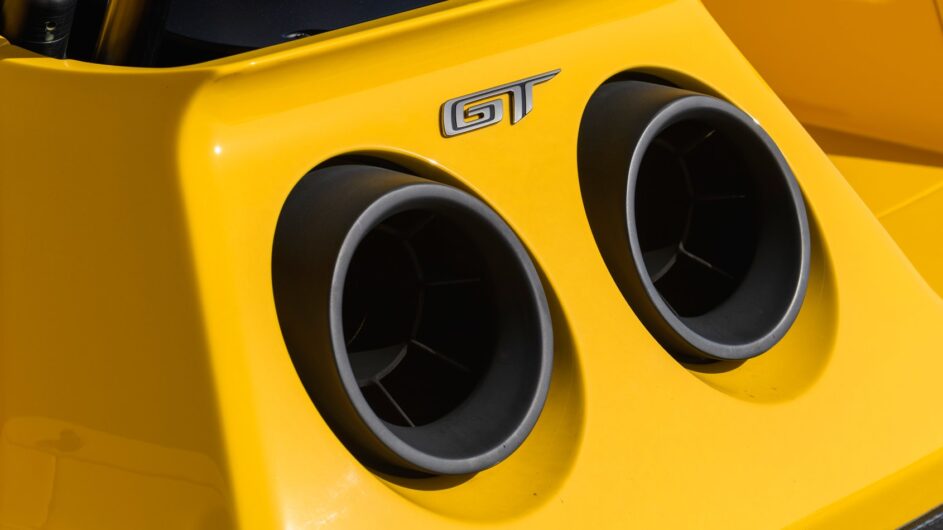
Bottom line; the Ford GT is an epic car to drive – on a track – because fundamentally it’s a racing car at heart. No question about that. But on the road it’s only so-so. Whether this will matter one iota to the 1000 owners that will take delivery of this extraordinary car over the next three years is highly debatable however. The answer is; almost certainly not.
Price and rivals
At $594,110 the GT either looks very expensive indeed beside a McLaren 720S($275,930) or a Ferrari 488 GTB ($241,605), or incredibly good value beside a McLaren P1, Porsche 918 or Ferrari LaFerrari.
In truth it’s not really a P1 rival, so the price does look somewhat high beside those lesser rivals, both of which are at least as quick as the GT in the real world, and make better road cars.
Having said that, the entire three year production run of 1000 cars is completely sold out; Ford took orders of interest from over 8000 wanting potential owners, so maybe it’s Ford who has got the pricing of its car right, and McLaren and Ferrari who should be charging more.
Either way, it’ll more than likely go up in value, not down as it matures, and becomes increasingly desirable.
This article originally appeared at evo.co.uk
Copyright © evo UK, Dennis Publishing

